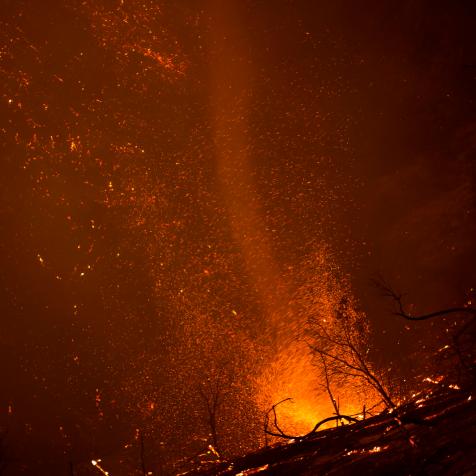
Rob Lind / EyeEm
What Was Hiding in the Smoke During Wildfire Season?
Increasing numbers of wildfires in the western United States are part of a worrying trend. Across the world, huge forest fires damage buildings, the environment and local economies, endangering life, and overwhelming authorities. But research has identified another noxious hazard from the fires – their smoke can spread infectious disease far and wide.
Scientists from the University of Idaho and the University of California, Davis have discovered more than 900 different microbes and around 100 types of fungi existing in smoke plumes. Tiny infectious particles are hitching a ride on particulate matter contained in the smoke, allowing them to travel extremely long distances.
Wildfires aerosolize these plant and soil-borne infectious agents – capable of causing asthma and other respiratory illnesses – providing the perfect vehicle to spread for thousands of miles. Soot and other particle clusters in smoke protect microbes from the ultraviolet sunlight that would normally kill them, say the researchers.
Human health impacts from wildfire smoke drift and microbe inhalation are relatively unstudied, and researchers still do not know exactly how far or which microbes are carried in the smoke. “Some microbes in the soil appear to be tolerant of, and even thrive under, high temperatures following wildfires,” said George Thompson, associate professor of clinical medicine at UC Davis and study co-author.
Coccidioidomycosis, or Valley fever is one of the better-known infections, caused by a fungus that lives in soil. When the ground is disturbed, microscopic fungal spores become airborne and can cause sickness if they are breathed in. Firefighters, as well as agricultural and construction workers are known to be at risk.
Raising the stakes to find out more about the spread and its impacts is the fact that the number of wildfires and the amount of land they burn has vastly increased in the past 50 years. Comparing data on the decade between 1973 and 1982, in 2012 the number of fires was five times greater and the land area burned was more than 12 times larger.

Anton Petrus
“With longer wildfire seasons and higher severity trends, there is an urgency to work together in studying the behavior of the microbes carried by the smoke and their impact on human health,” Thompson added.
Authorities have known about toxins in forest fire smoke for decades. Polynuclear aromatic hydrocarbons (PAHs) produced by burning trees, grass and plants can cause cancer, as well as damage to the lungs, stomach and kidneys.
Admissions to hospital emergency departments in 2015 following wildfires showed that smoke exposure also increases the rate of heart failure, stroke and blood clots in the lungs. Risk from these and other conditions were greatest among the over-65s, and medics want more research to find out how to reduce exposure.
Complicating the picture is the fact that lung inflammation caused by smoke can also leave people susceptible to coronavirus (SARS-CoV-2). The Centers for Disease Control is advising that families give themselves more time than usual to prepare for wildfire season, talk to healthcare providers about how to reduce exposure, and stock up on medicines in advance.

Photo by Joel Sharpe
A surfer sitting out at sea and wearing a respirator due to the thick smoke haze caused by the Australian bushfires 2020.
Public officials are creating cleaner air spaces and shelters to give people respite, because exposure worsens COVID-19 symptoms and health effects. If public health and local authorities are not diligent the coronavirus and wildfire emergencies together could easily lead to more fatalities.
Finally, it is now thought that smoke exposure could also harm marine mammals as well as terrestrial life. Dolphins and whales are being watched for potential injuries from particulate matter.
At sea the air is cleaner so smoke inhalation may have a greater impact. Whales and dolphins take big gulps of air when they surface. They also lack sinuses and other nasal structures that could trap particles in mucus, leaving them open to more lung damage. The only way to know for sure is to track the health of marine wildlife over the coming years.










